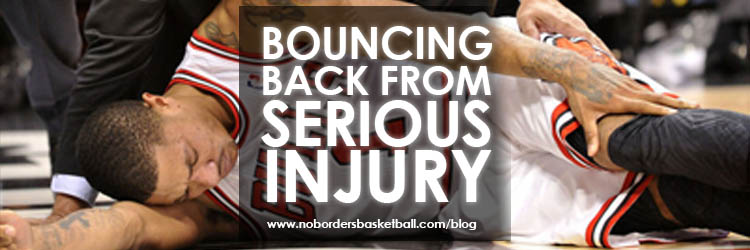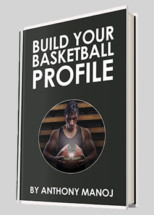Bouncing back after a serious injury has been my whole basketball life. As someone that was a serial over trainer in my youth most of my injuries were caused due to fatigue and not taking mobility exercises and recovery seriously.
That’s not the reason why I write this article. I write this article just in case you go through major injury that sees you sidelined for an extended period of time. I know so many basketball players that obtain a major injury and sit out two to three seasons because they didn’t bother to do a proper rehab.
Please note, I am writing this article under the assumption that the serious injury has been fixed by an operation. This article is all about planning your rehab and being motivated to get back on the court as soon as possible.
Know what the issues is
If you don’t know what exactly is wrong with your body then you are a loss cause. Yes, I said it! If you have a serious injury and haven’t had an expert look at it and correct it via surgery, if needed. Then you are not serious about playing basketball at the highest level.
If you have recently received a serious injury then here’s a checklist of thing you need to find out.
- Learn what corrective action the health specialist taken.
- What needs to heal? What was operated on and why.
- What’s the usual healing time? Have they worked on an athlete with a similar injury? What was their recovery time?
- What movements can and can’t you do and write them down.
- What the health specialists advice on next steps. Exercise? Rest?
Make sure that you totally understand what is going on with your injury because chances are that you will need to repeat what was told to a trainer if you chose to work with one to manage your rehab.
Plan the recovery process after a serious injury
Now that you know what exactly is wrong, a plan can be put in place to get back on court. Without a good plan in place laziness can take over and critical exercises get missed during vital stages of recovery. I have seen this all too often, where basketball players after surgery get so lazy that even after a year or more of recovery their injury is still weak and keeping them off the court.
When planning your recovery process I highly advise you to work with a trainer that has rehabilitated an athlete with a similar injury. With most of my major injuries that required operations, I consulted surgeon and strength and conditioning coach.
Checklist to creating a recovery plan
- Set a date when you will be back on court
Set a date when you expect to be back on court. This doesn’t have to be specific, just stick to a month. Be realistic with this date and consult your surgeon and trainer (if you chose to use one) - Find a trainer to work with
As mentioned previously I can’t advise you enough to work with a trainer. To have someone experienced set your exercises, track your progress and push you through pain barriers you wouldn’t by yourself is instrumental. It’s normal to back off if you have pain and with rehab you will go through levels of discomfort and pain. By having someone pushing you, your rehab time will greatly decrease. - Set goals
Setting goals both large and small allows you to track your progress and also keep you motivated. Without a properly defined direction it is easy to stray and forget the importance of good rehab program. The goals should be set with your trainer. Here’s 5 questions to ask yourself when defining your goals. - Calendar training sessions
Using a calendar on your phone, computer, printed calendar whatever it is. Make sure that you are scheduling in all your sessions at the very least a week in advanced. Make sure that nothing interferes with those training sessions. Plan your life around the training sessions instead of planning training sessions around the rest of your life.
These sessions include:- Strength sessions
- Mobility work
- Recovery work such as pool sessions
- On court sessions (when you have the clearance to return)
- Physio sessions
Mobility work
I have only recently realised the importance of mobility work. Since my last non major knee injury about 3 months ago. I have been religious about doing my mobility work everyday. Yes, this needs to be a daily activity!
I’m not going to give you mobility exercises to do as I believe that should come from a health professional. I recommend that you speak to your surgeon and physio to get the appropriate exercises for your injury.
My rehab programs
I feel that out of all the articles I have written this one is the one I am most experienced in. I have had 5 surgeries during my time playing basketball. All of which I have bounced back from to feeling sharper than before I got injured.
After my first surgery, which was a knee scope, I worked with my strength and conditioning coach to get back before the end of the basketball season in England. My program:
Knee stability and strength → Strength and light plyometric exercises → Plyometric exercises, weights and on court drills → heavy weights, plyometrics and on court work.
Serious injury is probably the worst thing in sports and it is no fun sitting out a season. However, if you flip that mind set and use this as a chance to get disciplined and work your ass off, sometimes you can be better off. With every serious injury I had, I have always bounced back to a better position than I was when I first injured myself.
Stay focused and motivated and I wish you a speedy recovery.

